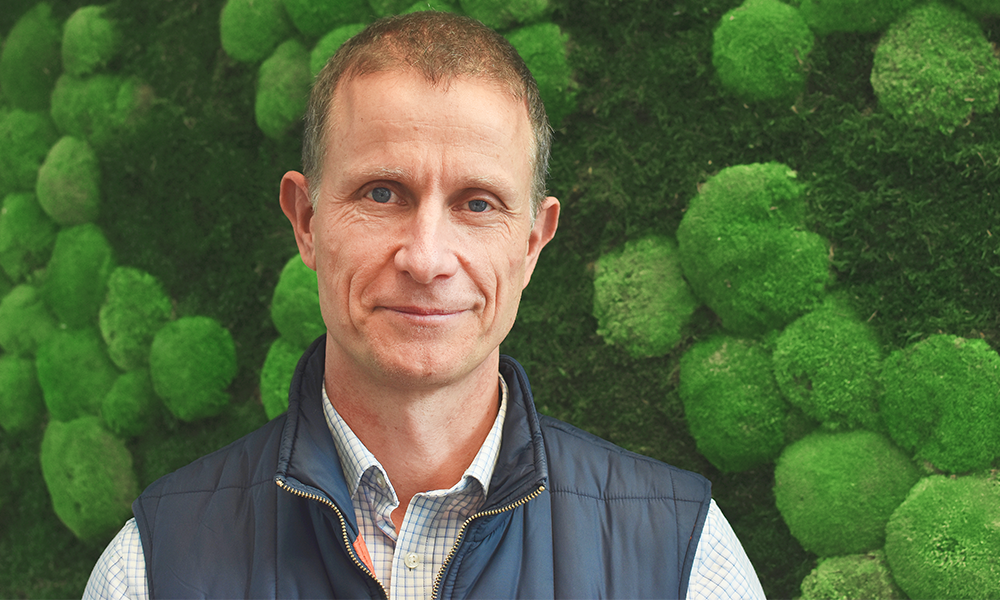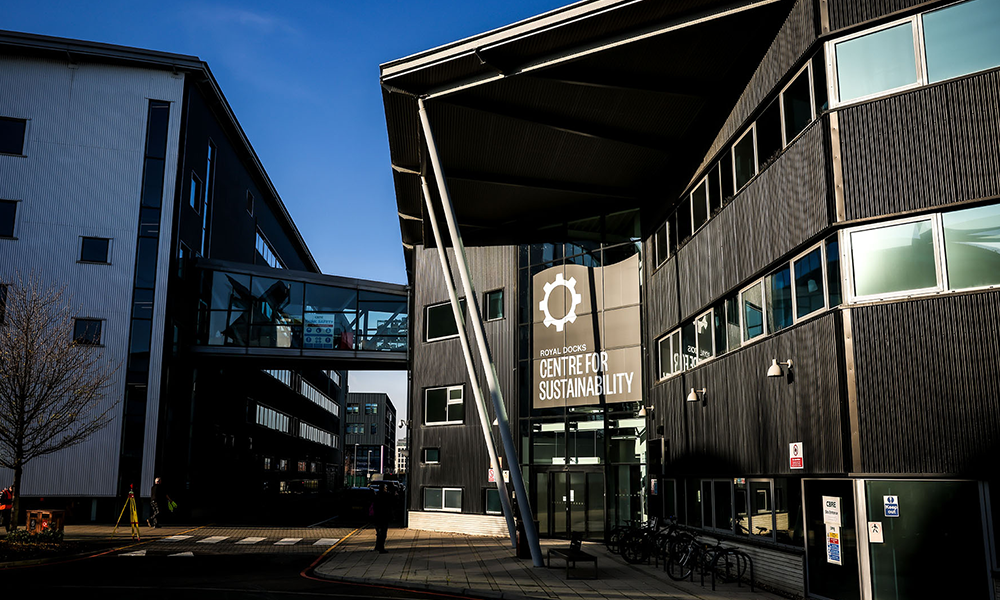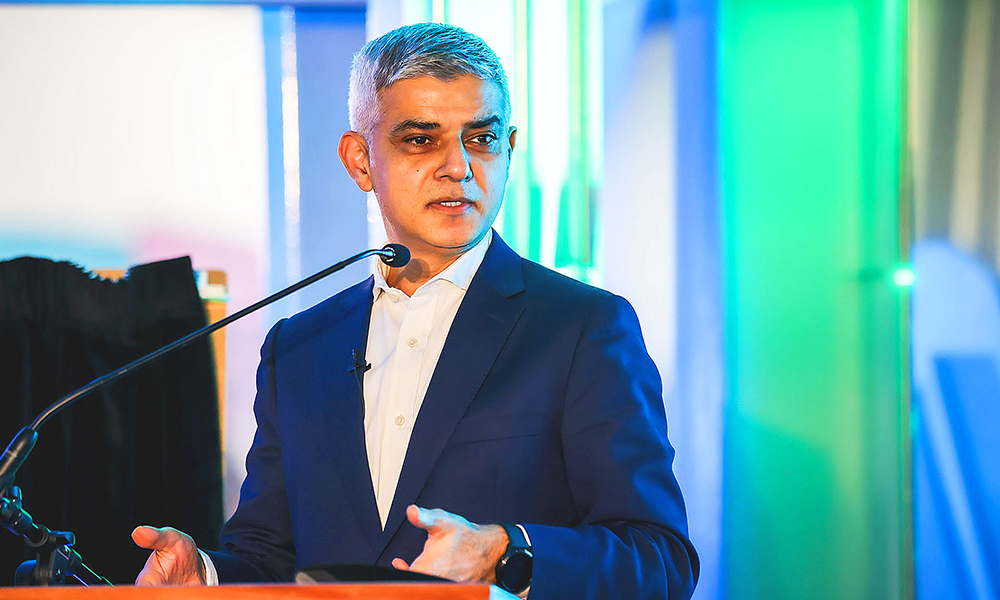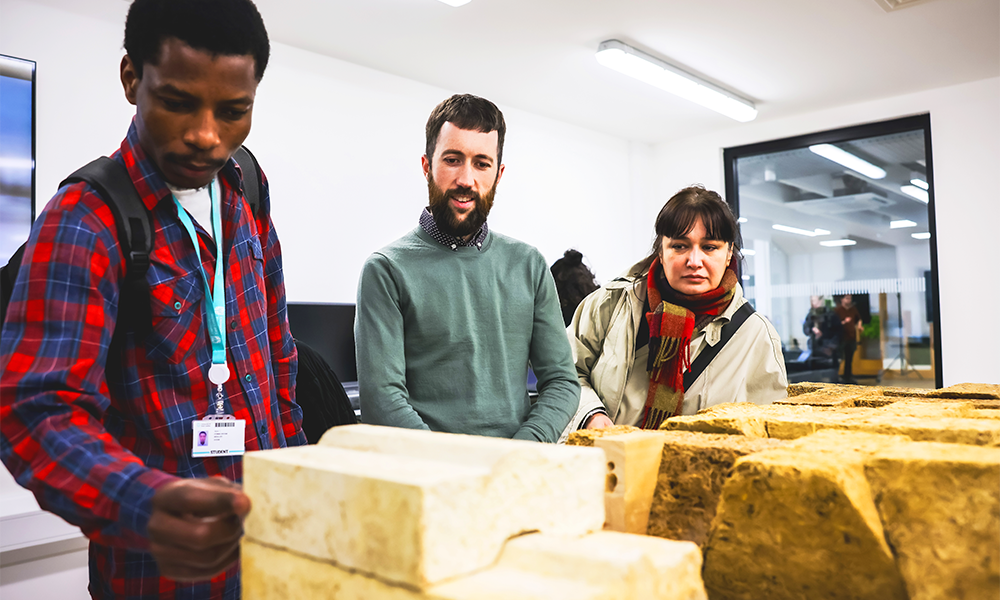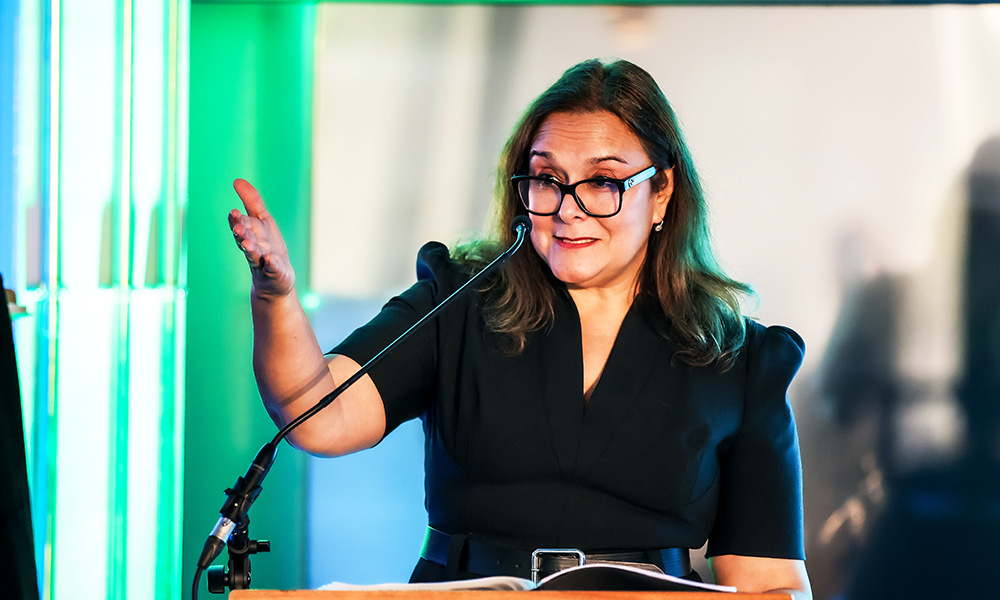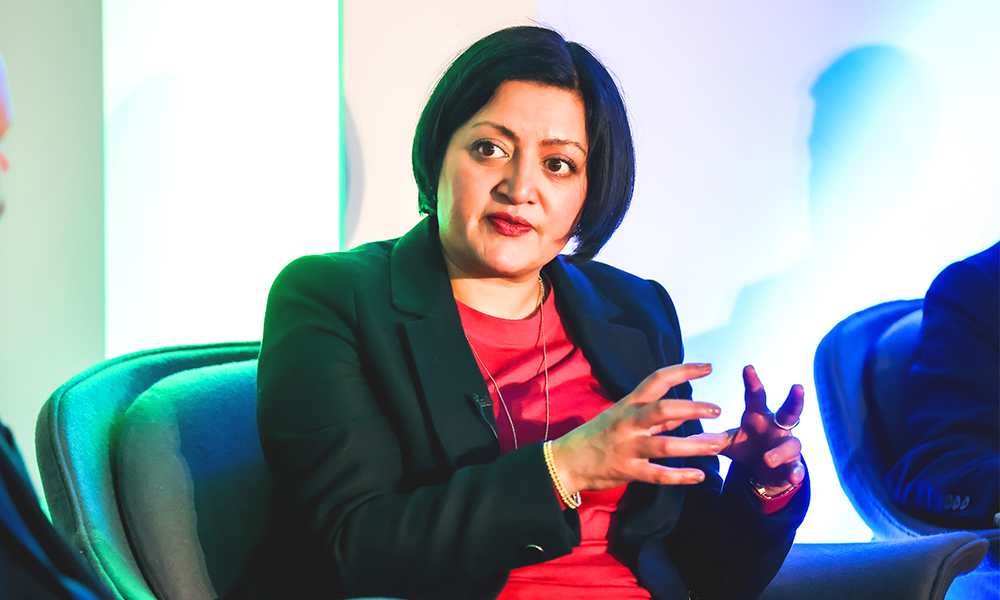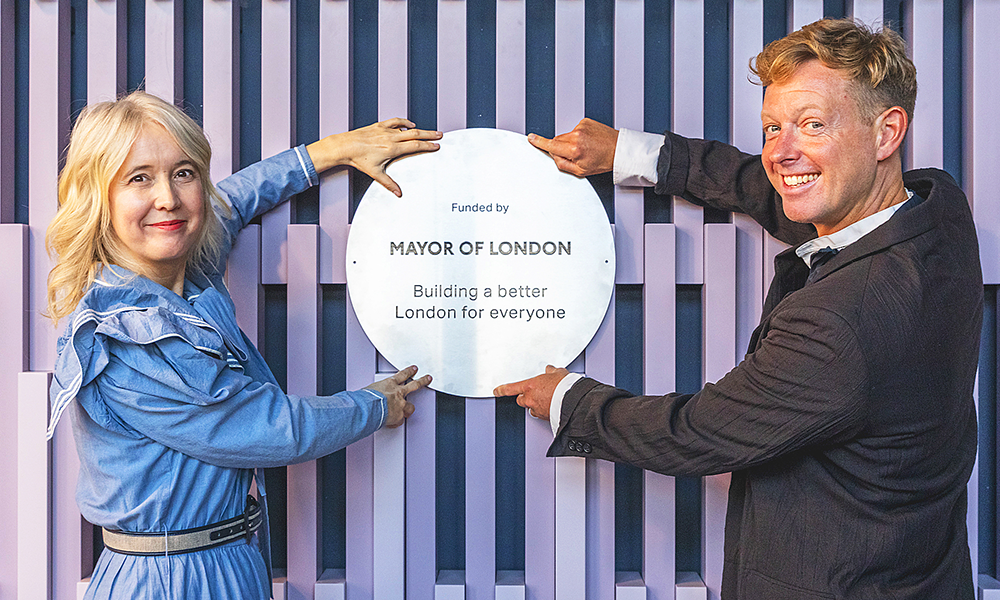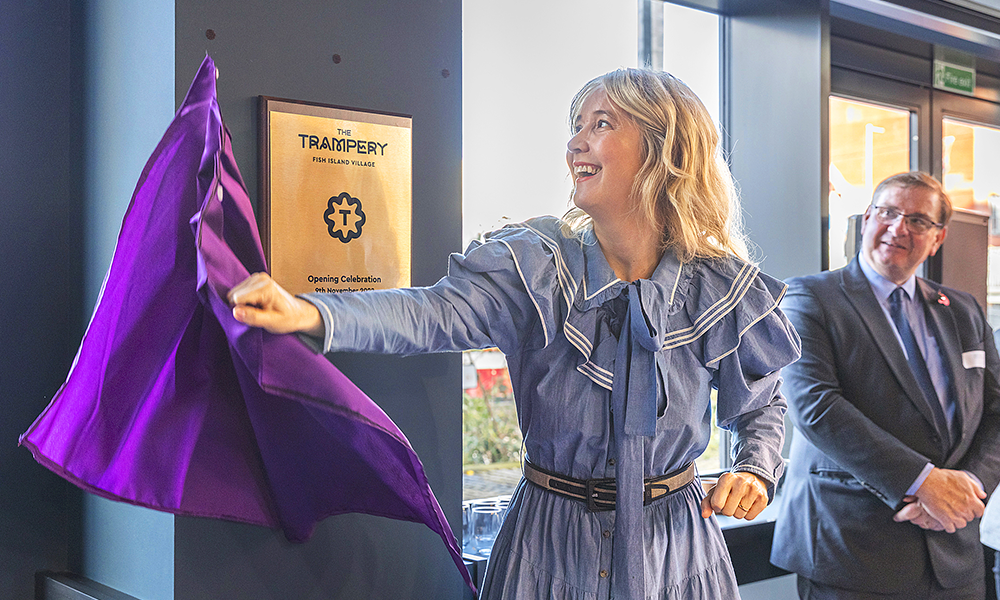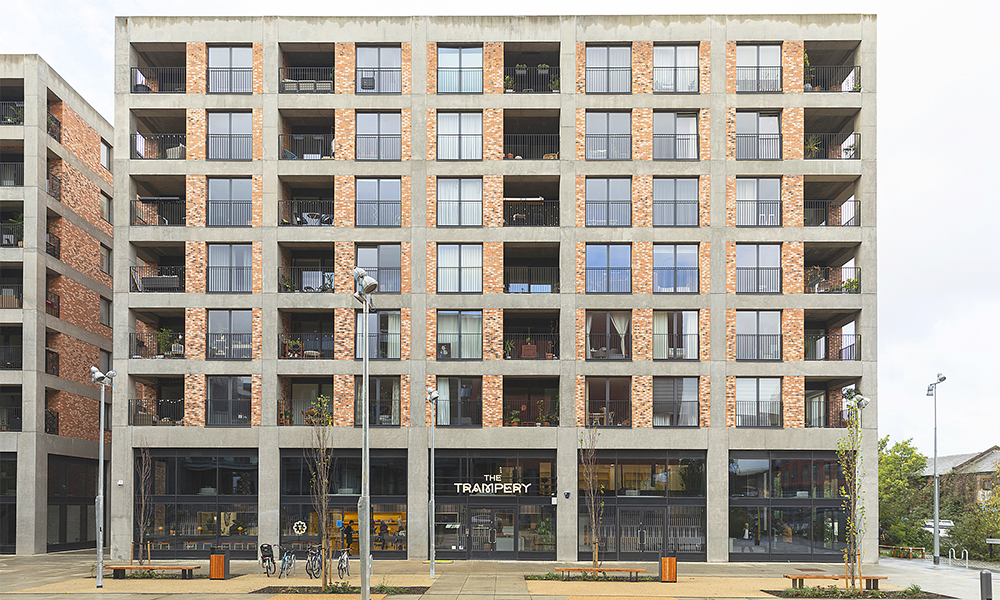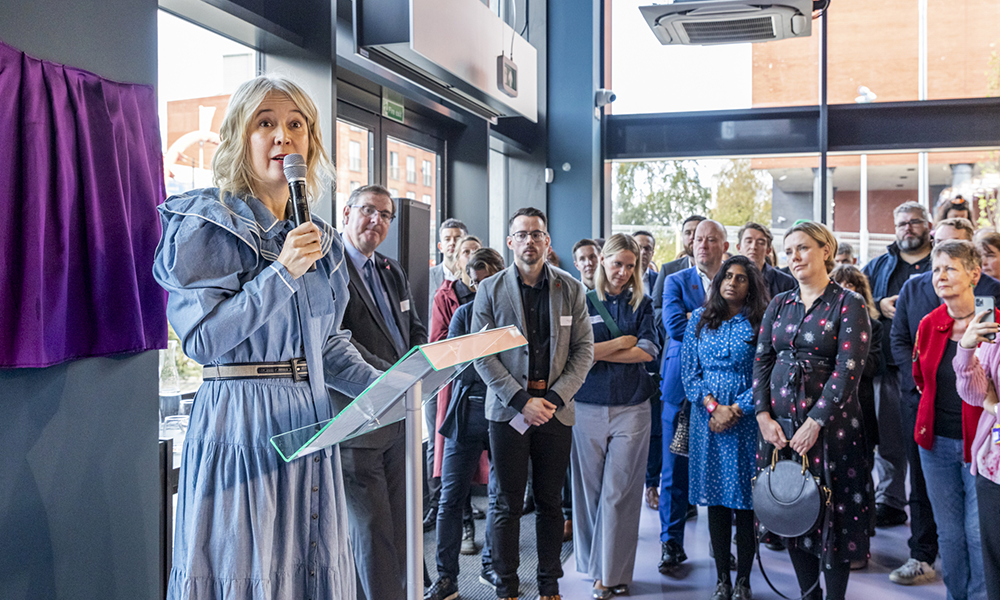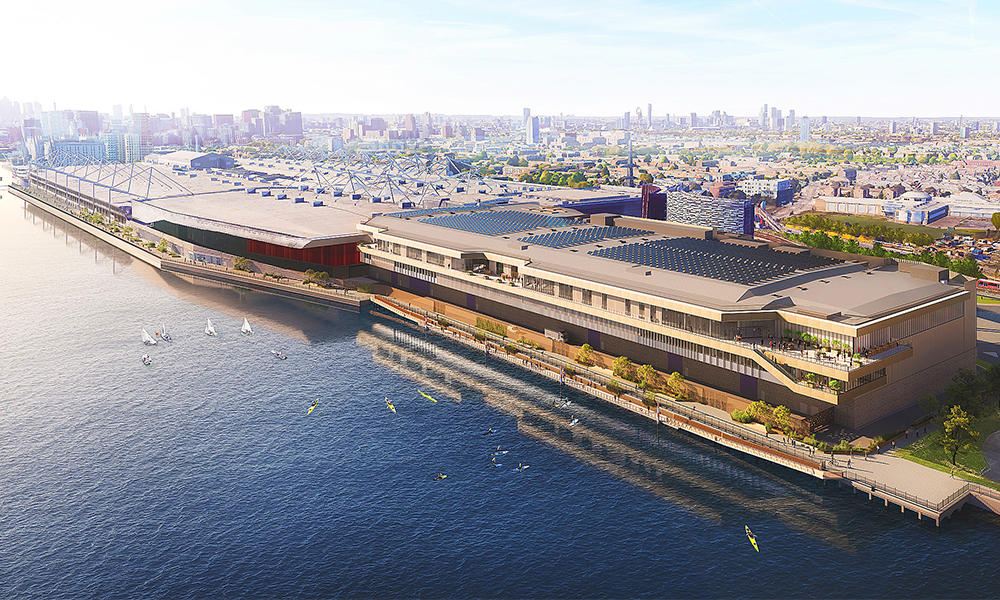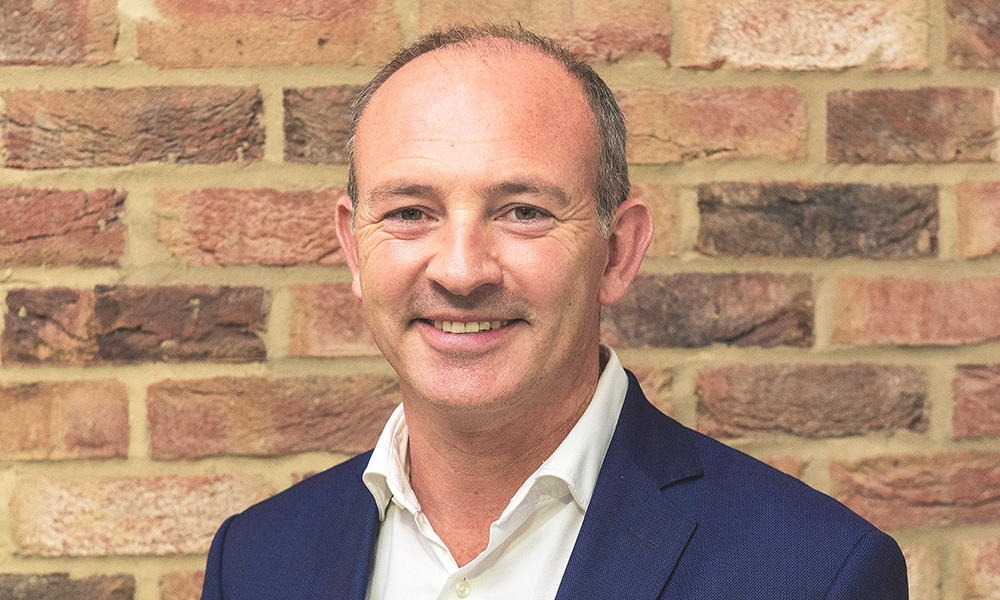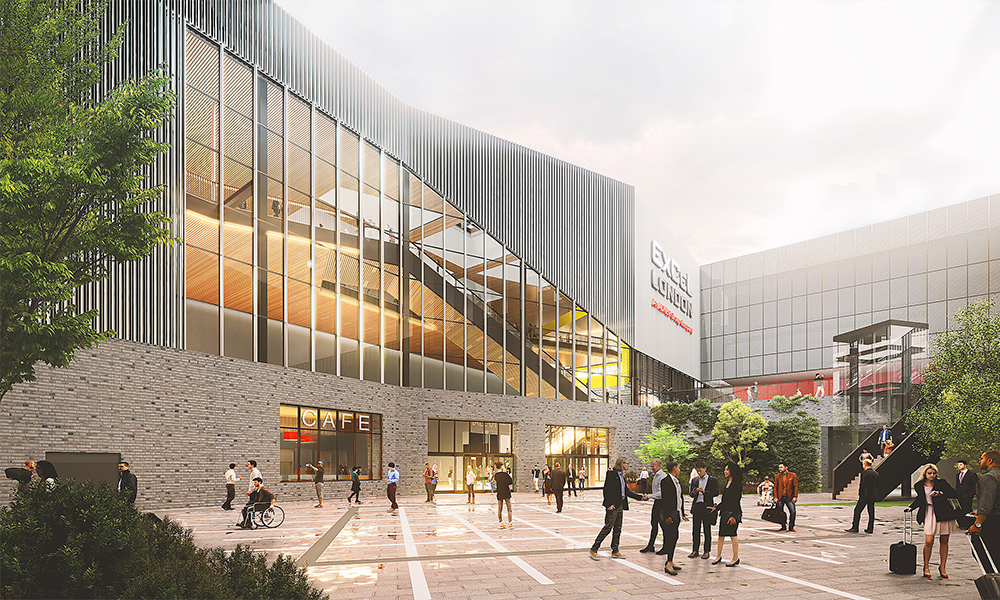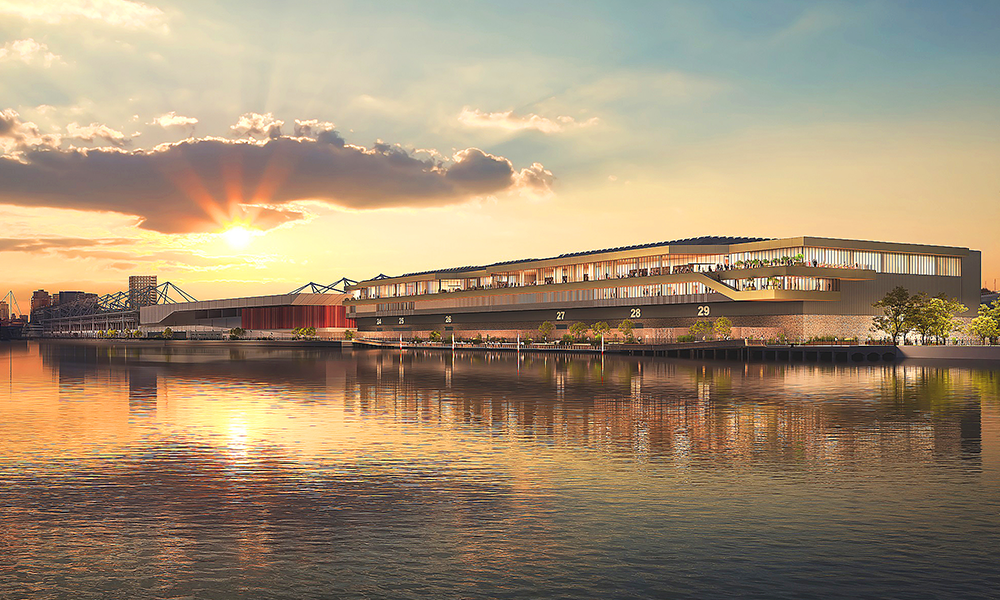Royal Victoria Dock installation is at Expressway, next to City Hall and is owned by Victoria Maddox
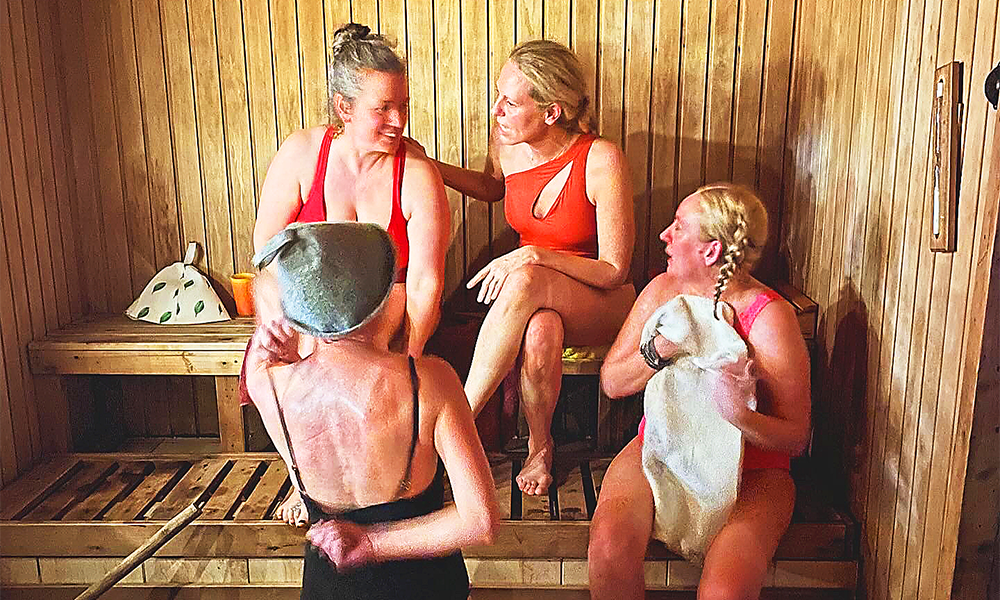
Subscribe to our free Wharf Whispers newsletter here
Sadiq Khan has another four years as Mayor Of London and doubtless, a long list of things to attend to from his base at City Hall at The Crystal in Royal Docks.
One way to tackle that stress might be to pay a visit to near neighbour Sweheat Sauna, a mostly open-air installation just outside Expressway on the edge of Royal Victoria Dock.
While Sadiq’s popularity has won him a record third term in office, demand for Sweheat’s services is also growing with a second sauna and a plunge pool both set to arrive on site in mid-June, boosting capacity from its existing 12-seat facility.
There’s also talk of a hot tub, should Sadiq prefer to support a growing business by immersing himself in a warmth beyond that of the London electorate.
The whole installation is the work of sauna activist and entrepreneur Victoria Maddox.
Having discovered a passion for the waterways of east London while working at the Alfred Le Roy cocktail barge in Hackney Wick and as a gardener at ecological regeneration project Cody Dock, she had her first wood-fired sauna in a converted horse box on the banks of the River Lea.
“It was called Warmth and was owned by women who wanted me to get naked before wrapping me in a bundle of leaves – it was 100ºC, right on the edge of the river,” said Victoria.
“Working at Cody Dock was quite a different environment from where I live in Croydon – it broadened my horizons a lot.
“There we were, taking saunas and throwing buckets of cold water over each other.”
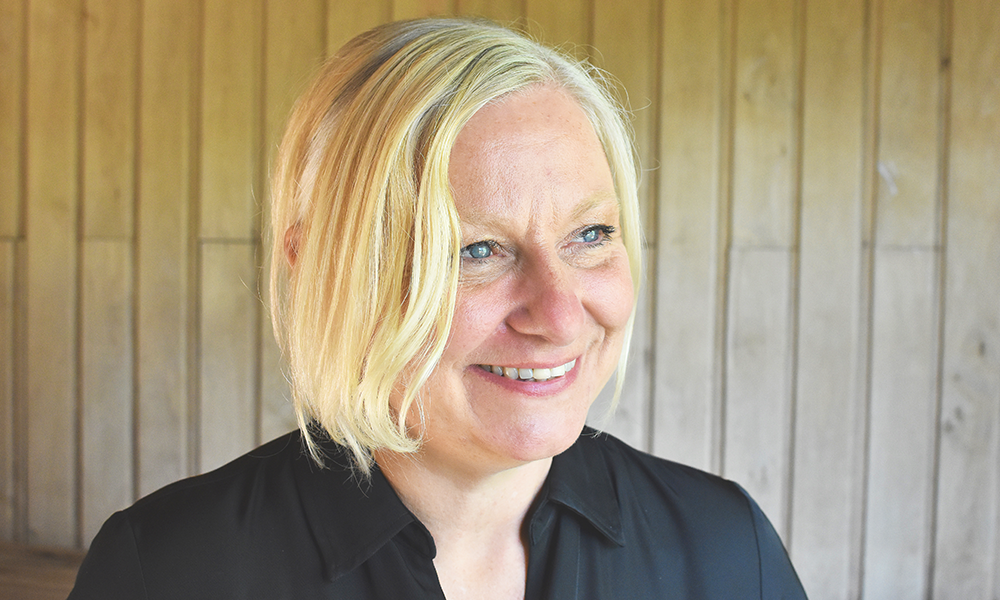
on a journey
Hooked, she joined the owners and helped take the sauna to Brighton in 2018.
Its success and the growing interest in wood-fired sauna, led her and others to create the British Sauna Society – originally a Facebook group that became a not-for-profit organisation in 2020 aimed at developing and promoting sauna culture in the UK.
Before this, however, Victoria had already acquired the sauna that stands in Royal Docks today for her first company, Nature Spa.
“Dunck” started life as a horse sauna in Nottinghamshire – built in Germany to aid the animals’ recovery after races.
But with its four-legged clients less than keen, it had become a toasty hangout for stable hands and was up for sale on eBay.
Once bought and converted for human use over the pandemic, Dunck entered service touring to Warleigh Weir near Bath, the town of Glastonbury, Gloucestershire, Cornwall and Dorset.
Spells at Community Sauna Baths in Hackney Wick (where Victoria was a founding board member) and the New Docklands Steam Baths in Canning Town followed before relocation to Royal Victoria Dock when Sweheat opened up 10 months ago.
“We are an arts and culture facility – our sauna can be used as an amphitheatre – a crossover between a space to relax and a place of entertainment,” said Victoria.
“We have a wonderful list of events, but in between that, what I like to do here is to get people to enjoy their natural experience close to the lovely water of the dock – there’s an energy that makes everything so much more relaxed here.
“It’s grounded and it’s not pretentious. Social pressures should be off when we’re in the sauna, so I tell people when they come in that it’s not about endurance, it’s about enjoyment – that they should make themselves at home.
“There’s even a kettle, so they can make a cup of tea.
“People do chill out and have conversations – then, after 90 minutes, it’s done and they feel a million dollars.”
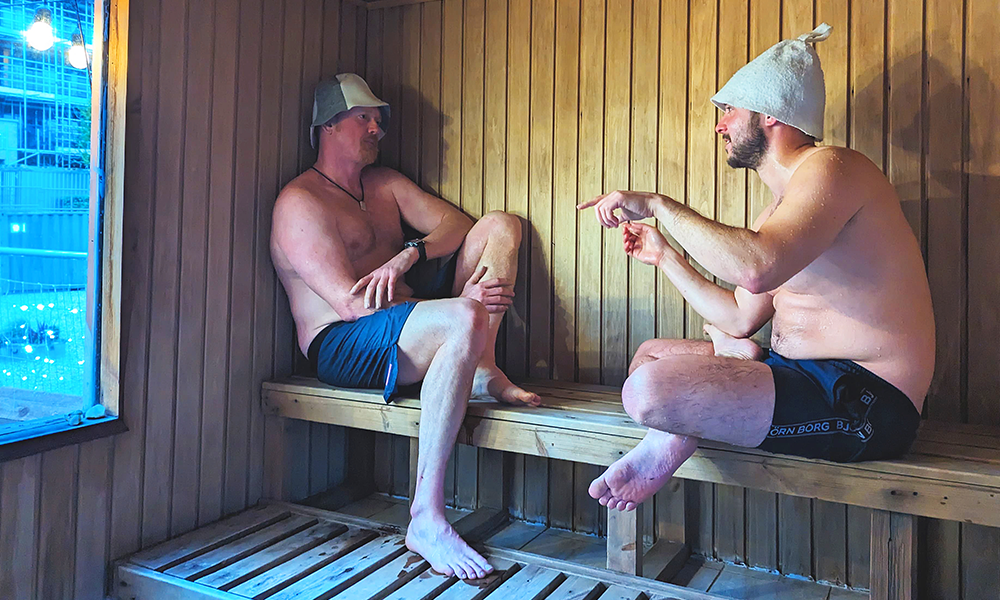
free and healthy
Bathing costumes are required at Sweheat, although clothing optional sessions are also offered.
“That first sauna with Katie Bracher and Warmth at Cody Dock changed everything – none of the other saunas I’d had before this really did it for me,” said Victoria.
“It gave me a different perspective – seeing people I worked with running around naked.
“Having a sauna session is an investment in health and wellness, primarily because it de-stresses you.
“Secondly, and what most people don’t understand about sauna is that it’s a sweat-bath – it’s about detoxing your body and cleaning it from the inside out.
“Sweating pushes the muck out, so you couldn’t get any cleaner, even if you were to sit in a bath for hours, or have a really hot shower.
“Sauna is the cleanest you’ll ever feel – have a sweat-bath and a really good scrub down. Your skin will feel amazing for days.”
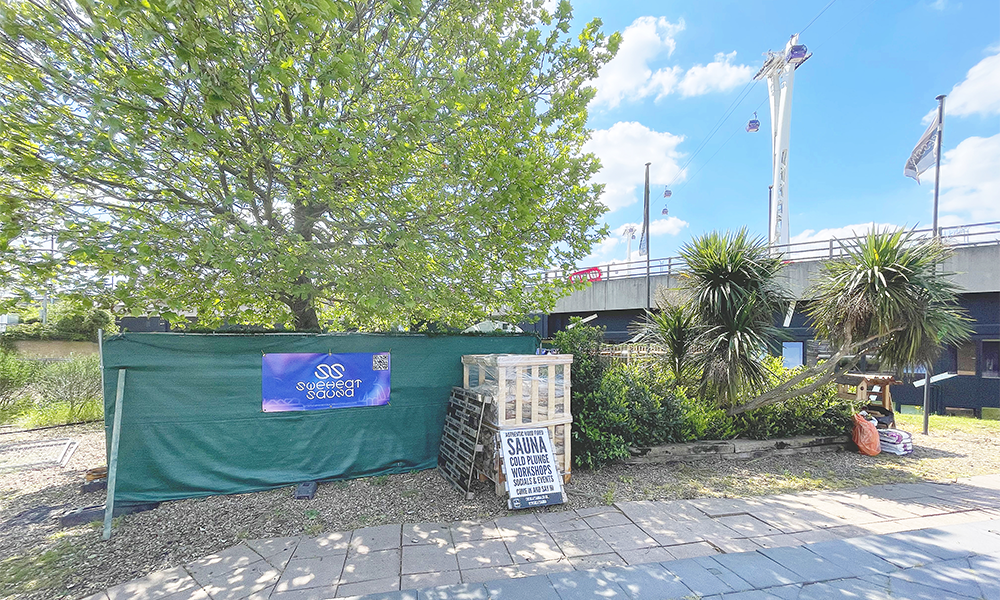
experience and events at Sweheat Sauna
Sweheat, which is run by Victoria and her son Aron Rogers, offers the simple combination of saunas in Dunck and a cold water plunge.
Clients are invited to repeat the process as many times as they like during a 90-minute session.
Located close to both watersports centre WakeUp Docklands and Love Open Water’s swimming facility at the western end of Royal Victoria Dock, it naturally complements their cold water offerings.
Beyond that core, however, the facility offers a programme of events aimed at allowing people to experience different aspects of sauna culture.
These include a Full Moon Sauna Ceremony which combines the core offering with guided meditations, performances, live music and nature immersion.
Mythic Sauna features storytelling, while German-Style Sauna is for enthusiasts of aufgass, a practice that uses essential oils and traditional towel wafting.
There are specific sessions for men and women and Queer Tales For Queer folks – billed as an evening of sweat, relaxation and storytelling.
“Our standard price is £20, which is affordable when compared with a meal or a night in a the pub,” said Victoria.
“Taking a sauna will get you some fantastic health benefits and you’ll feel amazing afterwards.
“I feel Sweheat is a bit anarchic – we’re doing something different and it’s all about how we interact with each other socially.
“We’re also right next door to the Mayor Of London.
“Saunas make people shelve their ego a bit and allow them to connect more on a human level – participants can forge bonds of friendship and trust that might otherwise be a struggle to create.
“This is the first sauna I’ve operated on my own and it feels fabulous.
“Every day is perfect for a sauna.
“In Britain we have this mindset that you can’t do anything unless the weather is good.
“But sauna really liberates you when you’re very hot and then step out into the elements. It’s magical.”

Key details – Sweheat Sauna
Sweheat Sauna is located on the edge of Royal Victoria Dock beside Nakhon Thai restaurant on land belonging to Expressway.
Standard sessions cost £19.99 for 90 minutes of sauna and cold plunging.
Events start at £24.99, with booking for all available here.
The sauna is open Monday, Thursday and Friday from 4.30pm-10pm and on Saturday and Sunday from 10.30am-10pm.
Sessions at 8.30pm are clothing optional, with clothing required at all other times.
Find out more about the sauna here
Enter Wharf Life’s prize draw to win a cruise on a Hot Tub or BBQ Boat here
Read Wharf Life’s e-edition here
Subscribe to our free Wharf Whispers newsletter here
- Jon Massey is co-founder and editorial director of Wharf Life and writes about a wide range of subjects in Canary Wharf, Docklands and east London - contact via jon.massey@wharf-life.com




